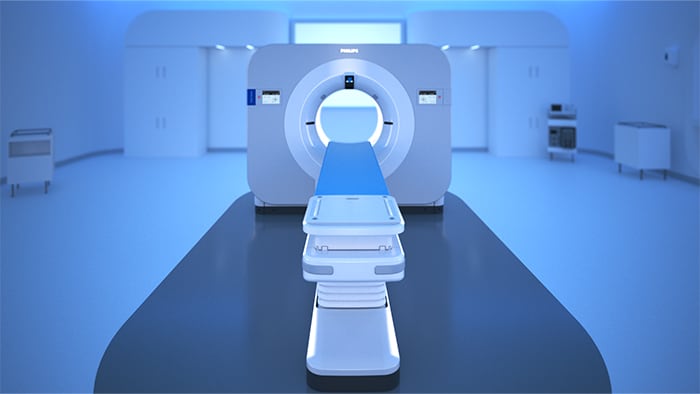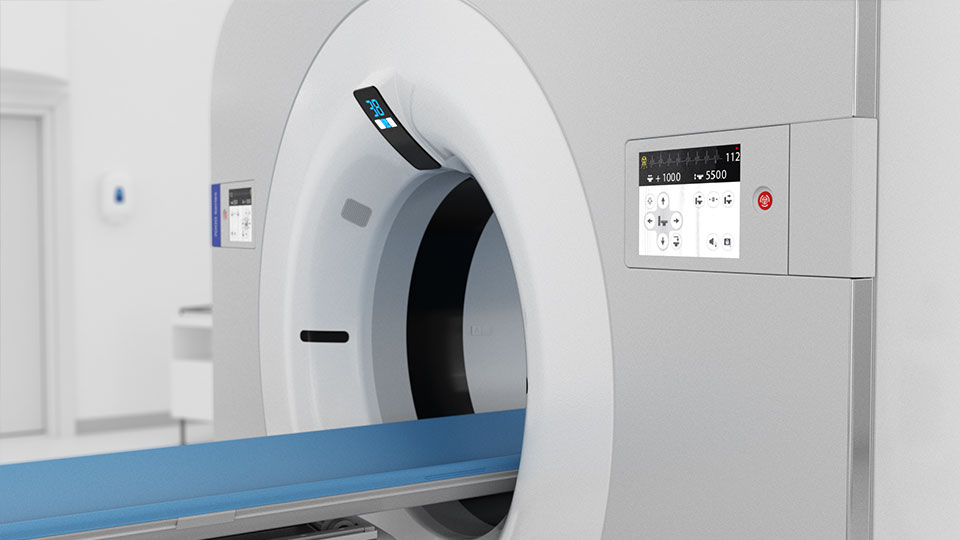More than 40 years of CT innovation
Discover how the evolution of Philips continues to improve people’s lives with spectral-detector results in CT imaging.
Conventional CT

1986: Introduction of the I.Q. CT imaging system scanner
The I.Q. was the industry’s first slip ring scanner with an on-board X-ray generator, which revolutionized CT (by making it a faster acquisition) and opened the way for spiral scanning, which transformed CT. Spiral scanning transformed CT from being a very slow modality to a faster one.
With the advent of the multi-slice scanner, the next transformation of CT introduced new imaging such as cardiac imaging and an even faster mechanism.
Philips CT

1990’s: Multi-slice scanner, simulator, and advanced tube technology
Philips introduced the industry’s:
multi-energy CT

2016: Philips IQon - the first spectral detector CT
Spectral detector CT transformed conventional CT to a quantitative CT. The second-generation Philips Spectral CT 7500 receives an Aunt Minnie Award for Best New Radiology Device in 2021.
Photon Counting*

2023 and beyond: Photon Counting*
The next frontier, Photon Counting* builds on advancements spectral already delivers in the areas of clinical certainty, dose efficiency and targeted imaging.
*Work in Progress, not FDA cleared.

Why Spectral CT?
Unlike traditional CT images, spectral-detector CT images capture spectral information 100% of the time —without special planning or set-up. That means you can analyze the spectral data in any image retrospectively, using a variety of spectral viewing tools. You can, for example, adjust the monoenergetic level or get Zeffective maps.
Can you see the difference?
Move the slider to reveal spectral results when compared to conventional CT.
How spectral detector works
Spectral detector simultaneously absorbs and differentiates high and low energy from a single polyenergetic X-ray beam. Spectral results are acquired within a single scan without the need for special modes.
Spectral Results Anytime, Anywhere. Single DICOM entity contains sufficient information for retrospective analysis.
Detector-based spectral CT simultaneously absorbs high and low energies in the same time and space.

Spectral CT helps me objectively differentiate contrast staining from hemorrhage, obviating the need for additional follow up scanning and prolonged patient observation, which can result in reduced costs and radiation exposure to patients.1,2
Ryan K. Lee, MD
Chair of the Department of Radiology, Einstein Healthcare Network
Customer Spotlights
See what our customers are saying about Spectral CT 7500.
More from the world of spectral-detector CT

Spectral detector CT Research Compendium

Advantages of a spectral detector-based CT system

A scientific review of dual-energy and spectral computed tomography imaging
1Results of customer testimonies are not predictive of results in other cases. Results in other cases may vary. 2Source: Naveed, J of Neurointerventional Surgery, 2020, “Utilizing dual energy CT to distinguish blood from contrast leakage following middle meningeal artery embolization for chronic subdural hematomas” – included as substantiation

